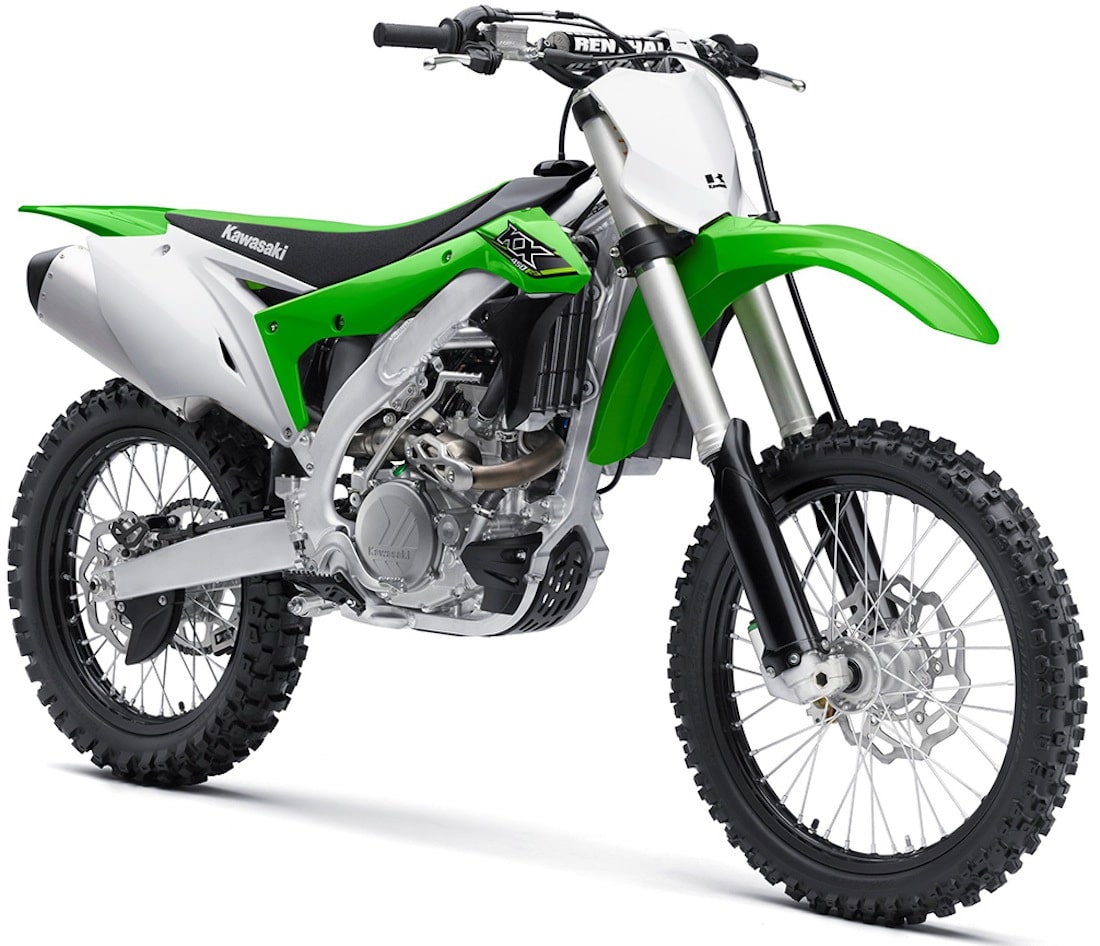ASK THE MXPERTS: FIX MY 2017 KX450F FORKS FOR ME
 The 2017 was a good bike ruined by forks that few people understood and no one wanted to learn about.
The 2017 was a good bike ruined by forks that few people understood and no one wanted to learn about.
FIX MY 2017 KX450F FORKS FOR ME
Dear MXA,
I own a 2017 Kawasaki KX450F, the one with Showa TAC air forks. I hate the forks. I have tried every possible air pressure combination and still can’t get them to work. Can you give me air pressure numbers for the three chambers that actually work?
Showa SFF-TAC air forks are the most complicated and difficult-to-tune forks ever put on a production bike—and, thankfully, they are gone now. They should never have been spec’ed on a bike going out to the general public. With three different air pressures, 20 different compression and rebound settings, and four different oil-height adjustments, a rider has 420,000 tuning combinations to work with. And, in a sport ,where a large percentage of riders never touch the clickers on their suspension or check the air pressure in their tires, they were too complicated for the averagerider. But, if you understand how the TAC forks work, you have a fighting chance of getting decent performance out of them. Think of Showa TAC forks as a submarine.
Think of Showa TAC forks as a submarine.
The best way to understand how Showa TAC forks work is to think of them as a submarine. Like a submarine, the TAC fork has three different air chambers.
(1) Inner chamber: The inner chamber, which would be where the sub crew lives and works, is the most important part of the sub (and TAC fork). The Showa’s inner chamber works as the main fork spring.
(2) Outer chamber: The outer chamber surrounds the inner chamber. It is the fail-safe system both on a submarine and a Showa SFF-Air fork. It protects the inner chamber of the submarine from terminal damage. On the Showa TAC fork, it works as a low-pressure chamber that allows a fork seal to blow without leaking air pressure from the high-pressure inner chamber.
(3) Balance chamber: A submarine has balance chambers that allow the submarine to surface or submerge based on the pressure inside these tanks. On the Showa TAC air fork, the balance chamber (located in the piggyback reservoir on the lower right fork leg) provides air pressure that works in the opposite direction of the other two chambers. While the inner and outer chambers both push the fork downward towards the ground, the balance chamber pushes the fork upward.
 This is a cutaway of the Showa TACair forks’ balance chamber.
This is a cutaway of the Showa TACair forks’ balance chamber.
Changing the air pressure in the balance chamber has several effects on the fork’s performance. First, if you increase the pressure in the balance chamber, the fork’s overall length will decrease. If you lower the pressure in the balance chamber, the fork will get longer. Additionally, raising the air pressure in the balance chamber will make the fork feel softer in its initial stroke, while lowering the balance chamber pressure will make it feel stiffer. In this situation, the balance chamber works very much like preload on an old-school, coil-spring fork. Finally, the air pressure in the balance chamber stops the TAC fork from topping out when the front wheel is off the ground, which was a common problem on previous air forks.
Now, onto your 2017 Kawasaki TAC air forks. You want to know how much air to put in each chamber to make your forks work up to snuff. Sadly, the numbers vary with the speed of the rider, size of the jumps and roughness of the track. During testing, MXA was able to get fairly different air pressures to work almost the same way by juggling their relationship to each other; however, we think that most Kawasaki KX450F owners just want someone to give them the three air pressures that will work for them.
MXA settled on its air pressures by starting with the stock Kawasaki numbers and working our way up the pressure scale. In the end, we didn’t use a single recommended Kawasaki air pressure setting. Our numbers work for a wide variety of riders, but they don’t take into account your personal peccadilloes. It is equally important to note that the air pressure is just the spring; it is not the damping. The compression and rebound clickers are as important as they ever were, so try not to focus so much on air pressure that you ignore the damping.
The inherent problem with air forks is that they are speed-sensitive. A faster rider will run higher air pressures in the inner and balance chambers than a slower rider, which means that suggested air pressures must always have an asterisk attached that is based on the rider’s speed and weight, as well as the track design. We have provided the air pressure settings below for Vet, Intermediate and Pro riders. These are the setups we ran on the 2017 Kawasaki KX450F:
Inner spring rate: 138 psi (Vet), 152 psi (Intermediate), 167 psi (Pro)
Outer spring rate: 16.5 psi
Balance spring rate: 160 psi (Vet), 174 (Intermediate), 189 (Pro)
Compression: 13 clicks out (5 clicks out)
Rebound: 12 clicks out
Fork-leg height: 5mm up
Notes: As a general rule, we always ran more air pressure in the balance chamber than in the inner chamber. This lets the forks settle and not ride as high in their stroke, which helps the KX450F turn better.




Comments are closed.